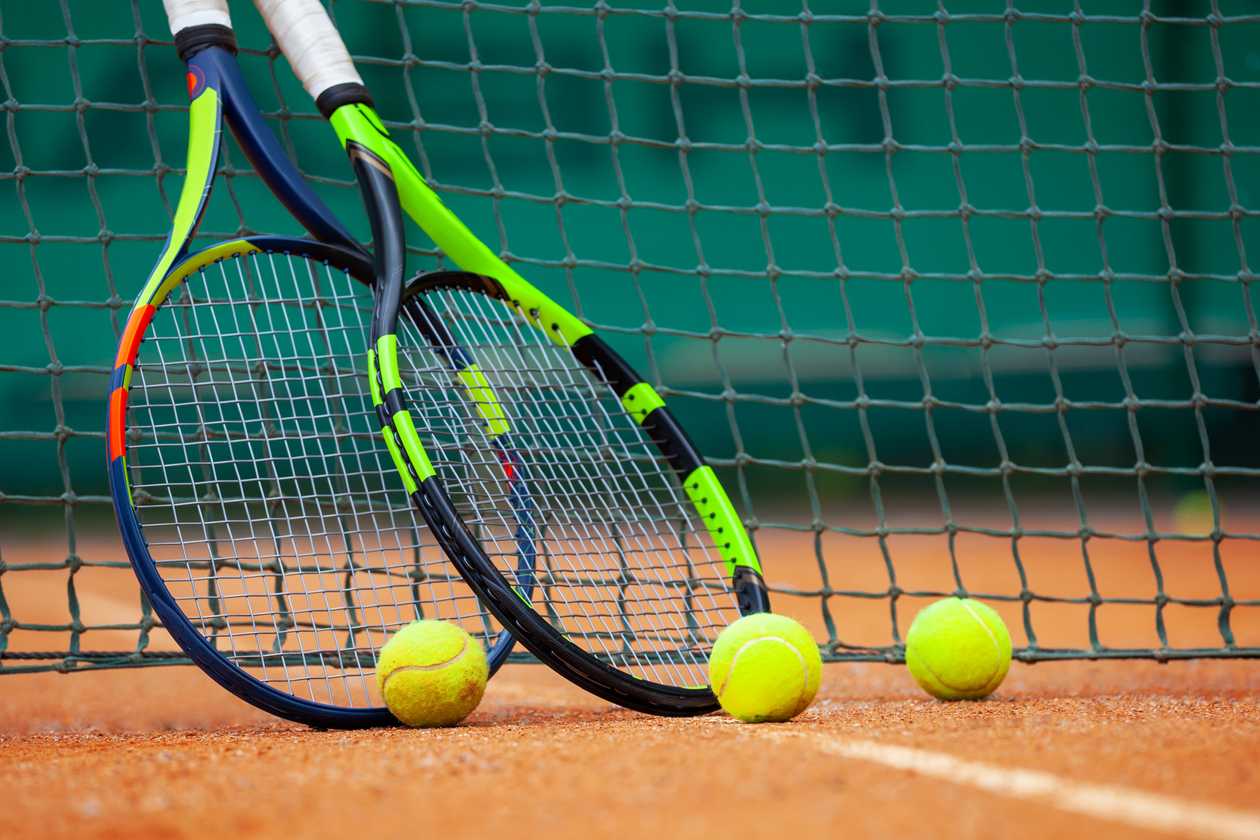Our evaluations and opinions are not influenced by our advertising relationships, but we may earn a commission from our partners’ links. This content is created independently from TIME’s editorial staff. Learn more about it.
You don’t have to be a U.S. Open contender in order to appreciate a fresh new racket. However, finding the right one for you can be tricky. Once you’ve realized the size, weight, and balance you prefer, you’re left with many options that seem like they’re the same. It then becomes very easy to default to choosing the coolest-looking one (or just picking the new version of your old one).
As with any piece of sporting equipment, determining the best tennis racket for you is personal and depends on several factors: your skill level, your size, and your unique style and preferences. For the best guidance, consult with a tennis pro and, when possible, try out rackets in person before making a purchase.
What to consider when buying a tennis racket
The best way to find out if a tennis racket is a good fit for you is to demo a few rackets in person. Hit for a significant period of time to get used to how the racket swings and feels. Remember to practice overheads, volleys, and serves, and try to emulate how you’ll actually play with the racket. Many brands, like Wilson, have try and buy programs, where you can try out rackets for up to one week and then return them before you make a purchase. The best picks will be the rackets you feel most comfortable with in head size, grip, and weight—ones that don’t tire you out and allow you to swing and serve with ease.
Common tennis racket terms
Head size: The main, rounded part of the racket, which holds the strings, can vary by size. Standard size is 27 inches long with a head between 85-97 square inches. Mid-sizes are slightly longer than 27 inches with a head size usually between 98-104 square inches, and oversized can be as long as 29 inches, with a head size over 105 square inches. Larger head sizes are good for beginners, helping them make contact with tennis balls without wearing out their arm as they grow in skill level.
Balance: Balance refers to where the actual point of balance is located on the racket. Headheavy rackets have a balance point that is closer to the head of the racket versus right in the middle, while headlight rackets have a balance point closer to the butt of the racket (below the grip).
Grip size: The grip is the part of the racket you hold on to. It’s usually padded. This can vary, but rackets usually come in 0-5 sizes when it comes to grip.
String pattern: Tennis racket heads are made up of strings that run in a criss-cross pattern. Mains are strings that run vertically, from the head to the throat of the racket, while cross strings run perpendicular to the mains. Most brands communicate these patterns in their specifications by using, for example, 16/19 or 16 inches x 19 inches.
Grommets: Short, plastic tubes that run along the edge of the racket to help keep the head strings in place.
Bumper: Located at the top of the racket, the bumper helps prevent scraping when your racket hits the ground.
Other tennis rackets terms for higher level players
Swingweight: Swingweight helps you judge a racket’s power (heavier) and endurance (lighter).
Torque: When you swing a tennis racket, the circular motion generates a force, called torque, which transfers to the ball when you hit it.
Stiffness/flexibility: Believe it or not, a tennis racket can bend—and the stiffness rating (RA) can tell you how much (or how little) it’ll flex while you play. This rating is a number between 50-85. The lower the score, the more it’ll absorb energy from the impact of the ball. The higher the score, the stiffer the racket—which means that energy is then absorbed by your wrist, elbow, and arm. While a stiffer racket generates more power, the downside is the potential for tennis elbow and injury.
Beam width: This term refers to the width of the frame. This is measured in millimeters, and there’s usually three measurements (referring to the head, shoulder and frame). A wide beam (24 millimeters or higher) will generate more power, but it’s not as easy to move the racquet efficiently. A narrow beam (22 millimeters or less) is easier to control, but relies on the player to generate power. An average beam is in the middle of these measurements.
Our top picks for best tennis rackets
Best budget tennis racket: Wilson Tour Slam
Offering stability and comfort, the Wilson Tour Slam is a great budget racket for any beginner. The oversized head offers a wide margin for error, and at just $30, it’s a steal for anyone looking to get into the game.
Specifications:
- Head size: 110 square inches
- Grip size: 4 ¼ to 4 ½ (grip sizes 2, 3, 4)
- Weight: 10.9 ounces (unstrung)
- Length: 27.25 inches
- String pattern: 16/19
Pros:
- Inexpensive, great for beginners
- Forgiving head and overall feel for less than ideal contact
Cons:
- Limited grip sizes
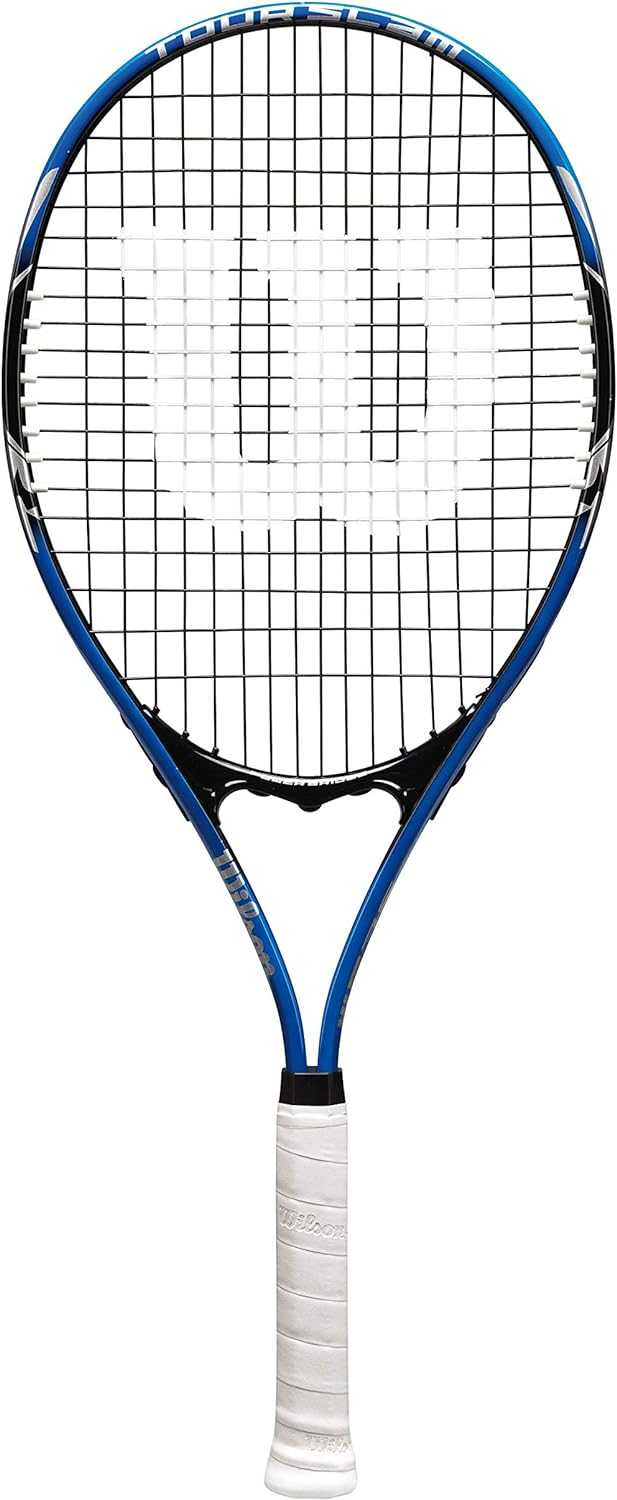
TOUR SLAM TENNIS RACKET
Best tennis racket for control: Head Speed Pro
The Head Speed Pro is consistently ranked as a favorite for intermediate to advanced players who seek optimal control for fast-paced games.
Specifications:
- Head size: 100 square inches
- Grip size: Ranges from 4 ⅛ to 4 ⅝ (grip sizes 1-5)
- Weight: 10.9 ounces
- Length: 27 inches
- String pattern: 18/20
Pros:
- Highly reviewed
- Pro recommended
Cons:
- Pricey
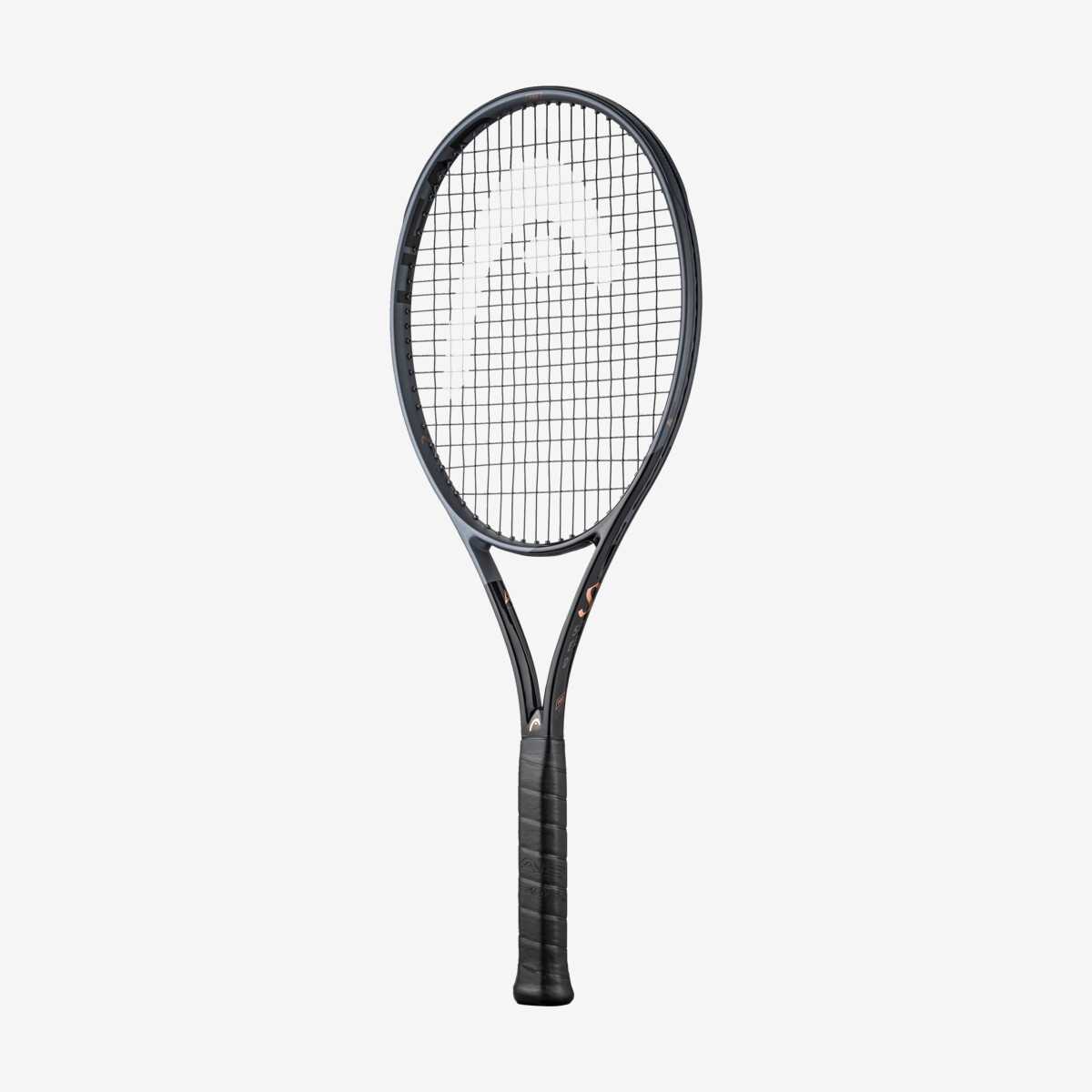
Head Speed Pro
Best tennis racket for intermediate players: Babolat Pure Strike
Customers who identify as intermediate players speak to the Pure Strike’s lightweight feel and commanding control.
Specifications:
- Head size: 98 square inches
- Grip size: Ranges from 4 ¼ to 4 ⅝ (grip sizes 2-5)
- Weight: 10.8 ounces (unstrung)
- Length: 27 inches
- String pattern: 16/19
Pros:
- Easy to control
- Reviewed highly
Cons:
- Pricey
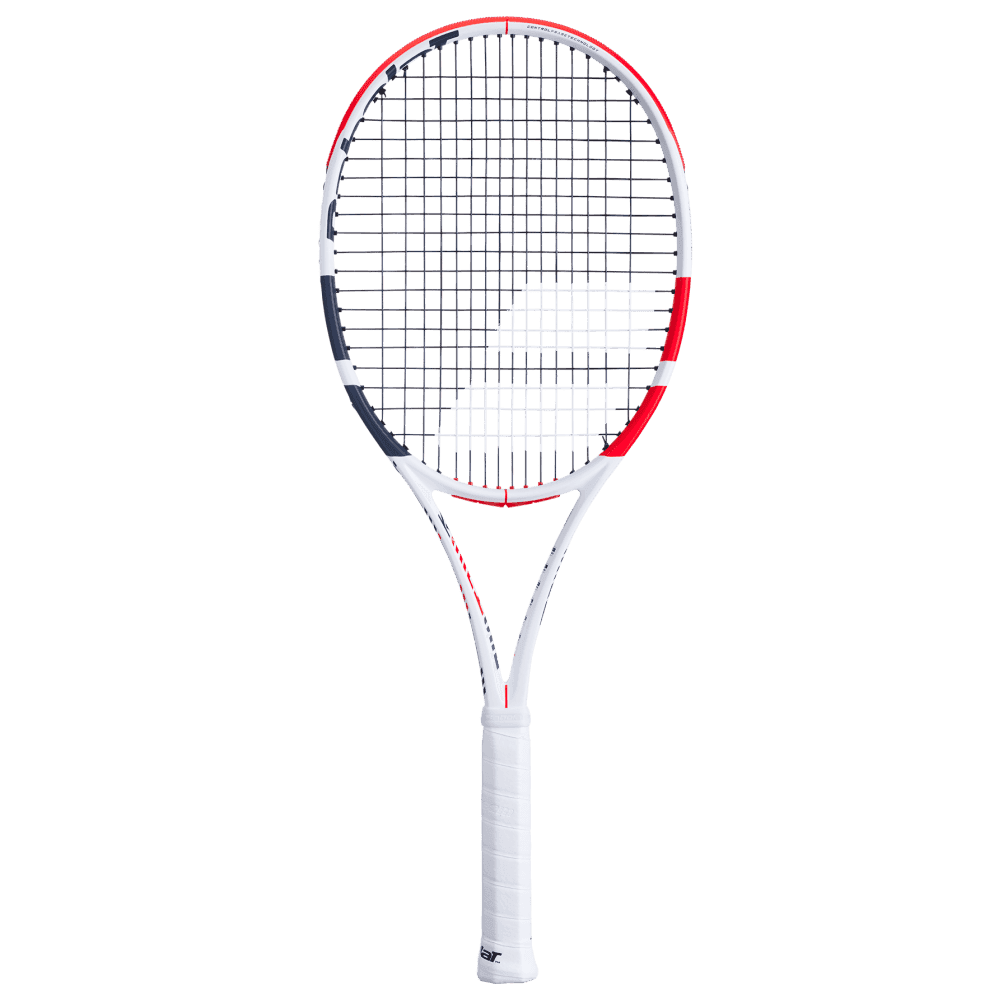
Pure Strike 16/19 Unstrung
Best for Advanced Players: Wilson Pro Staff RF97
A favorite choice of Roger Federer, the Wilson Pro Staff’s sleek design makes it a good fit for pro-level play.
Specifications:
- Head size: 97 square inches
- Grip size: Ranges from 4 ⅛ to 4 ⅝ (grip sizes 1-5)
- Weight: 11.98 ounces (unstrung)
- Length: 27 inches
- String pattern: 16/19
Pros:
- Vetted by pros
- Highly reviewed
Cons:
- Pricey

Wilson Pro Staff RF97
Best tennis racket for tennis elbow: Prince Phantom Pro
Repeating any physical motion over and over can leave you prone to injuries and conditions like tennis elbow. This racket helps mitigate the effects of those motions by offering a light, comfortable feel.
Specifications:
- Head size: 97 square inches
- Grip size: 4 ⅛ (grip size 1)
- Weight: 11.3 ounces (unstrung)
- Length: 27 inches
- String pattern: 16/18
Pros:
- Stability without extra weight
- Good price
Cons:
- Limited grip sizes
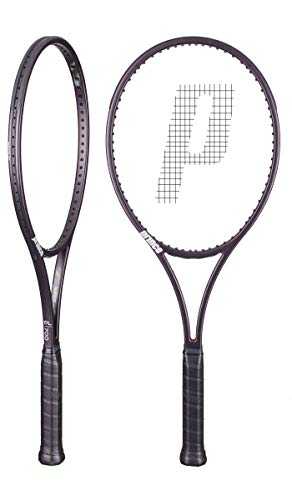
Prince Phantom Pro 97P Tennis Racquet (4 1/8)
Best tennis racket for women: Yonex VCORE 100
This easy-to-swing racket provides stability and control that garners spin and speed without sacrificing comfort.
Specifications:
- Head size: 100 square inches
- Grip size: Ranges from 4 ⅛ to 4 ⅝ (grip sizes 1-5)
- Weight: 10.6 ounces
- Length: 27 inches
- String pattern: 16/19
Pros:
- Easy to maneuver
- On the lighter side
Cons:
- On the pricier side

Yonex VCore 100 Tennis Racquet - Unstrung, Mid Plus, Tango Red
Best tennis racket for kids: Babolat Rafa Nadal 25
This lightweight racket, with an oversized head, is great for youth who are just starting out. With its aluminum construction, it resists wear and tear, and at $39, it’s affordable.
Specifications:
- Head size: 108 square inches
- Grip size: 4 inches (grip size 0)
- Weight: 8.5 ounces
- Length: 19, 21, 23, 25, and 26 inches
Pros:
- Varies in length
- Durable for youth wear and tear
- Great price
Cons:
- Limited grip size
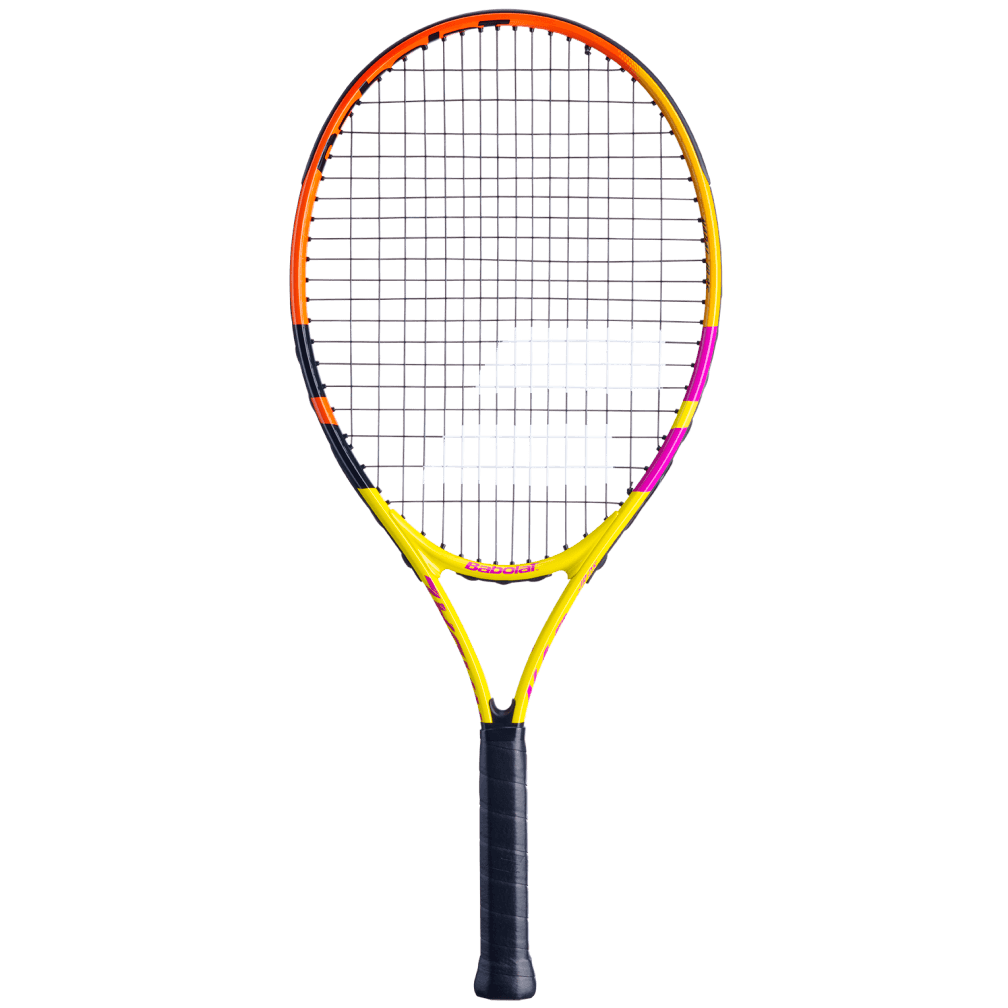
Babolat Rafa Nadal 25
How we selected the best tennis rackets
We made our selections based on a combination of professional recommendations, customer reviews and ratings, and product research.
Frequently asked questions (FAQs)
What is Roger Federer's tennis racket?
Roger Federer plays with a Wilson Pro Staff racket.
Are expensive rackets worth it?
Like tennis shoes for men and tennis shoes for women, tennis rackets can see higher prices based on brand name, design, and materials. Some pricier rackets tend to cater to more professional level players, but there are high quality rackets on the lower end of the price scale. Ultimately, your budget will help you to determine the best racket for you.
What is the ideal racket weight for me?
Ultimately, it depends on your proficiency, skill level, strength, tennis goals, and, above all, personal preference. Pro tennis players usually opt for heavier rackets (which generate more power), around 310 grams and up. Mid-weight rackets of around 300 grams tend to be the average. Lighter weight rackets (285 grams and under) are often used by beginners who are getting used to the sport.
Which racket grip size is best for me?
Most adult women manage well with a 4 ¼ (grip size 2), while men typically go with 4 ⅜ (grip size 3). The best grip size for you will depend on your size, level of play, and preferences.
The information presented here is created independently from the TIME editorial staff. To learn more, see our About page.

